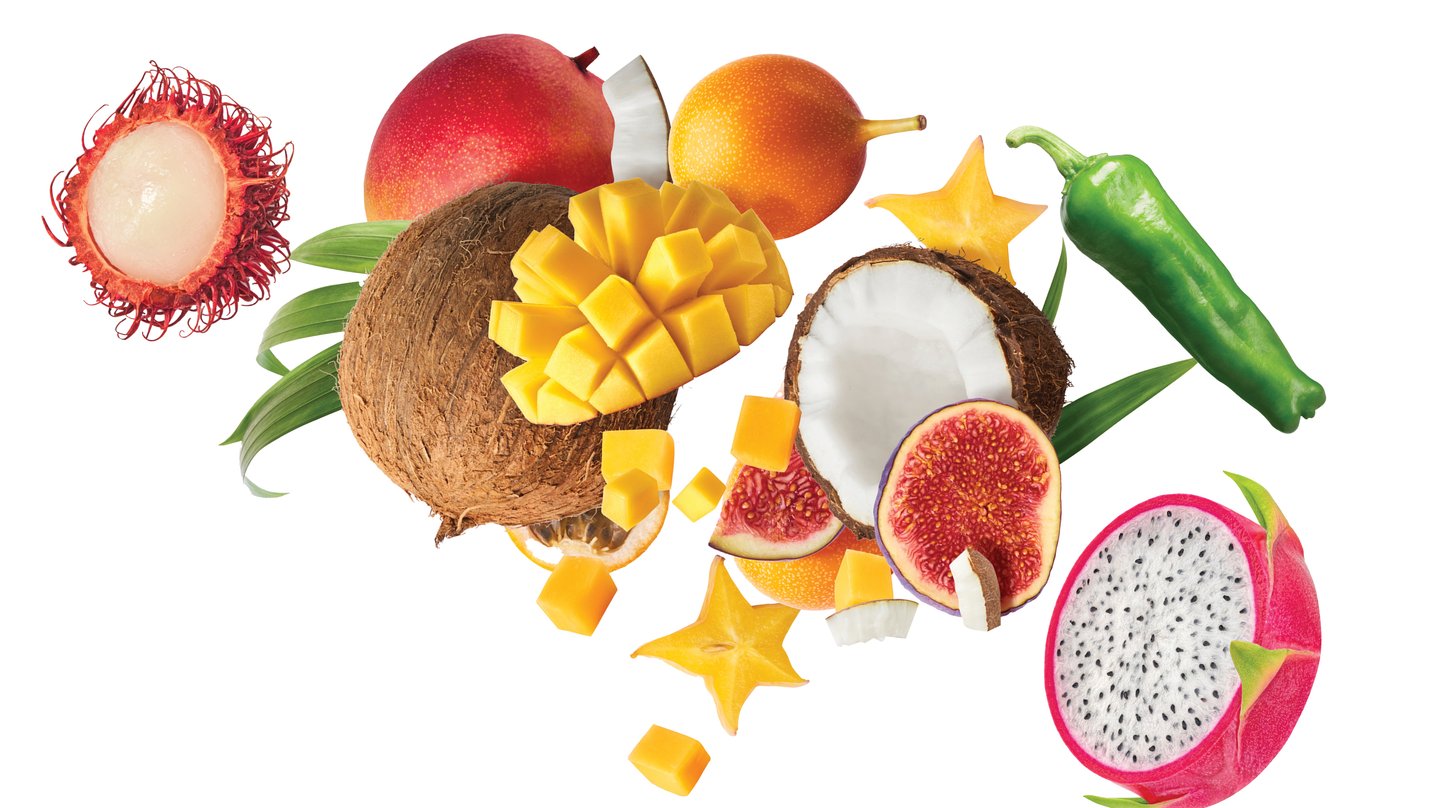What’s new in specialty produce?
While the produce department takes centre stage in any grocery store, it’s brimming with opportunities beyond the usual apples and oranges. Specialty produce—items that often aren’t staples in major grocery stores or are only available in limited quantities—satisfy consumer demand for unique, new-to-them flavours that often cater to the tastes of ethnic communities. Here’s a look at some specialty fruits and vegetables that can elevate grocers’ offerings.
New twists on citrus
There’s a world of citrus flavours beyond everyday lemons and limes. Kris Kasuya, sales manager at Bondi Produce, is enthusiastic about sudachi, a small, round, green citrus fruit from Japan that looks similar to a lime. “It has a huge pop of flavour with a super bright citrus profile. It’s sour, but not lemon-lime sour,” he says. Sudachi is added to Japanese recipes such as cold noodle dishes, as well as to dressings and salads. “It really brightens and refreshes a meal,” Kasuya says. “I would love to see these make a big push into the retail space and grow in the North American market … It stands out as something special.”
Tropical tastes
Tropical fruits such as jackfruit and mangosteen are on Adri de Wet’s list of popular specialty produce items. The president of Vancouver-based Fresh Direct Produce says East Indian and South Asian consumers are behind tropical fruits’ rising popularity. But, offering these items can also attract “adventurous eaters from other backgrounds who are curious about trying new ingredients,” she says.
READ: Four things to know about jackfruit
Jackfruit is popular as a meat substitute in vegetarian and vegan dishes, de Wet explains. “When unripe, jackfruit has a mild, subtly sweet taste and a texture like that of pulled pork.” When fully ripe, jackfruit becomes sweeter with flavours of banana, mango and pineapple. Meanwhile, mangosteen has a sweet, tangy flavour, notes de Wet. “Its unique taste and health benefits are drawing interest, and it’s starting to appear more frequently in specialty and Asian grocery stores.”
Another specialty fruit is actually grown stateside: pawpaws. Native to eastern parts of the United States, the pawpaw fruit has a mango-banana flavour and custard-like texture. “It sort of looks and tastes like a tropical fruit, but it grows in temperate climates,” says Jonathan Deutsch, a professor and founding director of Drexel Food Lab at Drexel University in Philadelphia.
At Longo’s, two popular tropical items are tree-ripened mangoes, which ripen in their natural environment and have a juicy texture and sweet flavour, and Honeyglow pineapples from Del Monte, which are extra sweet and have a radiant golden hue. Joe Fusco, Longo’s vice-president merchandising, produce & floral, says the grocer’s buying teams regularly connect with growers to stay on top of new items and are committed to bringing unique produce to its stores.
Get cooking
Canadians can look to speciality vegetables to mix things up in the kitchen. One item that’s currently popular in restaurants is the Jimmy Nardello pepper. “It’s been coined as the new shishito,” explains Kasuya of Bondi Produce. A versatile, sweet pepper, the Jimmy Nardello “can be eaten raw, it can be fried, it can be grilled … And it’s one item you’re going to see pop into retail very soon as a specialty pepper,” he says.
Squash is another category that doesn’t have to be the same-old, same-old. Koginut squash is a new hybrid of butternut squash and kabocha squash developed by Dan Barber’s Row 7 Seed Company. “They cook really well, so if you’re making soups, they get very creamy when you roast them,” says Kasuya. “They have a super nutty flavour and they’re sweet as well. Like all specialty items, it’s about getting away from the norm and exploring some other options.”
This article was first published in Canadian Grocer’s November 2024 issue.



